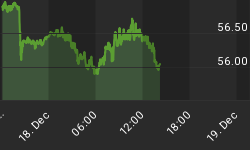Welcome to The Collection Agency Weekly Report, a new way to present my thoughts on the macro-economic outlook and the possible effects on financial markets. This first edition is a trial run of what hopefully will become a weekly event, seperate from but not replacing the Occasional Letter. At the end of the report is an email address, please feel free to send any constructive comments about this report. Now, on with the report.
Evidence from the US Federal Reserve shows lending standards have tightened appreciably in the past 3 months. Although this is lagging information it is of great importance as it shows the level of liquidity available to consumers and business. Whilst it can be risky to extrapolate a forward outlook from past data in this circumstance we see no current indicators that say conditions have reversed.
The Fed gathers opinions from the largest banks in each Federal Reserve District by asking them to complete a survey. The sample is selected from among the largest banks in each Federal Reserve District. In the table, large banks are defined as those with total domestic assets of $20 billion or more as of Sept. 30, 2007. The combined assets of the 33 large banks totaled $5.69 trillion, compared to $5.95 trillion for the entire panel of 56 banks, and $11.07 trillion for all domestically chartered, federally insured commercial banks.
As we are trying to look forward I want to concentrate on what the banks are doing in relation to the lending of credit to commercial and industrial (C&I) business and consumers.
Let's look at C&I loan standards.
Standards for large and middle-market firms (annual sales of $50 million or more):

Standards for small firms (annual sales of less than $50 million):

Standards across the board tightened in the 4Q and especially in the smaller banks. With 25% of the banks surveyed tightening and no banks easing, qualifying for credit for businesses has become more difficult. It's not just small business either as we can see above, the tightening of standards is universal. Banks are not tightening because of a recession risk per se. It would appear their actions are intended to discourage overall lending throughout the economy.
It could be said that banks are just more cautious in their use of capital but further evidence points to other measures that have been taken to discourage business borrowing. It also reveals the weakness of banks in the current climate.
Let us look at the terms and conditions banks require for making a loan. I will just use the data for large and middle market firms as the figures for small firms are comparable. Whilst the maximum size and maturity of credit lines and loans has tightened as would be expected with a squeeze on standards, we also see the following:
Costs of credit lines:

Spreads of loan rates over your bank's cost of funds (wider spreads=tightened, narrower spreads=eased):

Premiums charged on riskier loans:

There can be no doubt banks are raising costs, including spreads over their own funding (borrowing). This is not a move to protect against default in risky loans either, you can see that above as I have included premiums asked for riskier loans. Costs for loans not considered risky have also risen, even as prime rates have fallen.
The Fed began cutting its headline rate in September '07, having cut the discount rate in August that year in response to the arrival of the credit squeeze in July. The banks received the survey in early January of '08 and the returns were due by the 17th . That means the period reported on does not include the emergency inter-meeting cut and the further cut at the FOMC meeting in January. It does mean the Fed knew that lending standards had tightened considerably and this may well have been the reason for the Fed to dramatically cut its own Fed Fund Rates in an attempt to loosen conditions. It may well have realized that "baby step" reductions in the Fed Fund Rate were having little effect on bank rates beyond the published prime rate.
Has the Feds action had the desired result? At face value it may seem so as the prime rate that banks quote has dropped with the cuts in FFR. The differential has remained at 3% (Jun 06 PR - 8.25% / FFR - 5.25%, Feb 08 PR - 6% / FFR - 3%) but actual spreads above the PR have increased.
We already know that the sub-prime mortgage market has reduced to the point of almost being closed and that the standards for prime mortgage products have tightened. What though of the consumer credit card and loan market? Are stresses in bank capital resources showing here too?
As you can imagine the survey shows lending standards to have tightened with stricter criteria for fund amounts, credit scores and a widening of spreads for those that meet the requirements of a prime customer. The tightening for those with sub prime credit scores has been more severe.
Let's see what the Fed survey shows:
The extent to which loans are granted to some customers that do not meet credit scoring thresholds (increased=eased, decreased=tightened):

Spreads of loan rates over your bank's cost of funds (wider spreads=tightened, narrower spreads=eased):

Banks are tightening and increasing costs to consumers even with a Fed easing policy in place.
Finally what does the Fed survey reveal about why banks feel they need to tighten lending and raise costs to borrowers? The Fed asked the banks the following questions:
"Assuming that economic activity progresses in line with consensus forecasts, what is your outlook for delinquencies and charge-offs on your bank's loans to businesses in 2008?"
To read the rest of the report click here.















